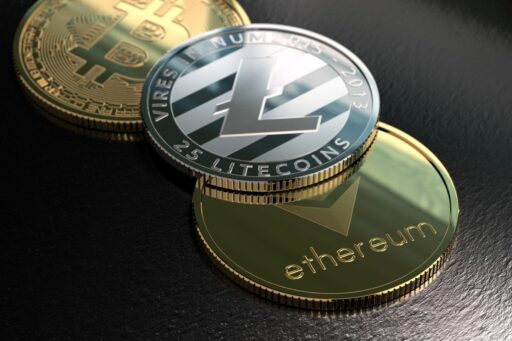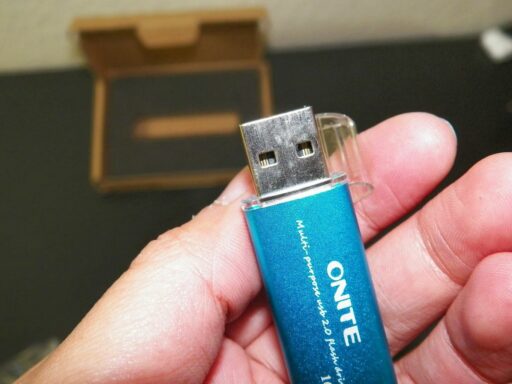In the ever-evolving landscape of cryptocurrency trading, finding an affordable crypto exchange that offers low fees, a user-friendly interface, and robust security measures is crucial for traders looking to maximize their profits. Our article delves into the various aspects of selecting the best crypto exchange for your needs, focusing on fee structures, user experience, security, liquidity, and the latest innovations in the market. We’ll explore how to navigate the complexities of digital currency swapping while ensuring cost-effectiveness and safeguarding your digital assets.
Key Takeaways
- Identifying the most cost-effective crypto exchanges requires understanding their fee models, including hidden costs associated with swaps.
- A seamless user experience with real-time data analytics and robust support services is integral for efficient and informed trading decisions.
- Security is paramount; choosing between non-custodial and custodial exchanges affects both privacy and the safety of digital assets.
- High liquidity and a diverse range of available assets are essential for favorable swap rates and expanding trading strategies.
- Staying abreast of emerging technologies and innovations, such as Decentralized Market Makers, can lead to faster and more efficient crypto transactions.
Evaluating Exchange Fees: Finding the Best Rates


Understanding Transaction Fees and Structures
When engaging with cryptocurrency exchanges, it’s crucial to grasp the fee structures that will apply to your transactions. These fees can significantly impact the cost-effectiveness of your trades and ultimately your investment returns.
- Maker-taker fees are common, where ‘maker’ fees are applied to orders that provide liquidity to the market, and ‘taker’ fees are for orders that take liquidity away.
- Flat fees offer a straightforward approach, charging a set rate regardless of the order type.
- Dynamic fees can vary based on factors such as transaction volume, payment method, or even the type of cryptocurrency being traded.
Transparency in fee calculation is paramount. Exchanges like Gemini and Crypto.com provide clear information on fees before you finalize a transaction. However, be aware that external factors like network changes can affect the final costs.
Remember to account for network transaction fees, which are necessary for processing your trades on the blockchain. These are separate from any trading fees set by the exchange itself.
Comparing Fee Models Across Platforms
When venturing into the world of cryptocurrency trading, understanding the fee models of various exchanges is crucial for cost-effective transactions. Gemini and Crypto.com showcase the diversity of fee structures that traders must navigate. For instance, both platforms employ maker-taker fees for spot trading, but the specifics can vary significantly based on factors like transaction volume and CRO stake.
Fee transparency is a key aspect when comparing platforms. Both Gemini and Crypto.com provide clear fee breakdowns prior to finalizing a trade, ensuring users are aware of the costs upfront. However, traders should be mindful of potential fee variations due to network changes or market conditions.
While Crypto.com offers fee-free crypto-to-crypto exchanges, Gemini charges for this service, highlighting the importance of understanding each platform’s unique fee policies.
Here’s a simplified comparison of fee types across Gemini and Crypto.com:
- Trading fees
- Conversion fees
- Instant purchase fees
- Deposit and withdrawal fees
- Custody and administrative fees
Each fee type can impact the overall cost of trading, and some platforms may also include charges for account management or inactivity. It’s essential to consider all these factors to find the most affordable exchange for your trading needs.
Identifying Hidden Costs in Crypto Swaps
While evaluating crypto exchanges, it’s crucial to look beyond the advertised transaction fees. Hidden costs can significantly impact the total cost of a swap, and they often lurk in the less obvious corners of the transaction process. Here are some common hidden costs to watch out for:
- Withdrawal fees: Some platforms charge high fees for withdrawing your crypto to your wallet.
- Network fees: Depending on the blockchain, transferring certain cryptocurrencies can incur variable network fees.
- Slippage: During periods of high volatility, the price at which a transaction is executed may differ from the expected price.
- Currency conversion fees: Exchanging fiat to crypto or vice versa can attract additional fees.
It’s essential to consider these costs when calculating the profitability of your trades. Even small percentages can add up over time, especially for frequent traders.
To ensure you’re getting the most affordable swap, always calculate the total cost by including these hidden fees. Comparing the total costs across different platforms can reveal the most economically efficient exchange for your needs.
User Experience and Interface: Navigating Crypto Exchanges


Assessing the Ease of Use for Instant Swaps
The ease of use for instant swaps is a critical factor for traders looking to exchange digital currencies swiftly. A user-friendly interface can significantly reduce the learning curve and enhance the trading experience. Platforms like Swapuz and PartySwap highlight the importance of simplicity, offering intuitive navigation and quick transaction processes.
- Swapuz boasts a 24/7 support service and a variety of coins for fast exchanges.
- YetiSwap provides sub-second transaction completion, competing with centralized exchanges in speed.
- PartySwap leverages the AVAX Blockchain for efficient token trades.
The goal is to minimize friction and ensure that users can execute trades without unnecessary delays or complications.
Selecting an exchange with a straightforward instant swap feature is not just about convenience; it’s about ensuring continuity in trading strategies and managing investments effectively. Users should prioritize exchanges that offer real-time data, comprehensive analytics, and low conversion fees to optimize their trading decisions.
The Importance of Real-Time Data and Analytics
In the fast-paced world of cryptocurrency trading, access to real-time data and analytics is crucial. Traders rely on up-to-the-minute information to track the value of their holdings and make swift, informed decisions. Advanced charting tools and analytics provide a competitive edge, allowing traders to anticipate market movements and adjust their strategies accordingly.
- Real-time tracking of cryptocurrency values
- Advanced charting tools for market analysis
- Predictive insights for informed trading decisions
The integration of AI and machine learning into cryptocurrency exchanges has revolutionized the way traders interact with the market. These technologies offer predictive insights that are not just based on quantitative data but also qualitative analysis, ensuring high success rates for traders.
Understanding market sentiment is another layer of analysis that can significantly impact trading decisions. Social media monitoring algorithms and sentiment analysis tools distill vast amounts of data from news sources, social networks, and blogs, providing a comprehensive view of market attitudes.
Support Services and Community Trust
In the realm of crypto exchanges, support services are crucial for both novice and experienced traders. A responsive and knowledgeable support team can significantly enhance the user experience, providing assistance with transactions, account issues, and security concerns. Exchanges that prioritize customer support tend to foster a higher degree of community trust.
The presence of comprehensive educational resources and assistance is a testament to an exchange’s commitment to its users’ success. This includes a variety of materials such as articles, guides, videos, and podcasts that cater to different learning preferences.
Community trust is also built through transparent communication and the availability of real-time support channels. Here’s a snapshot of support features offered by some platforms:
- Email, live chat, and social media support
- Educational resources like articles, guides, and videos
- Real-time customer support, sometimes available 24/7
- Dedicated teams for specialized trading or investment services
Exchanges that excel in these areas are often preferred by users who value reliability and a sense of community.
Security and Privacy: Safeguarding Your Digital Assets


Non-Custodial vs. Custodial Exchanges
When engaging with cryptocurrency exchanges, one must decide between the security and convenience of custodial services and the autonomy of non-custodial options. Custodial exchanges, like Gemini and Crypto.com, manage users’ private keys and offer additional services such as wallet storage and institutional-grade cold storage. These platforms often provide a more user-friendly experience, with the ability to quickly add or remove funds.
In contrast, non-custodial exchanges empower users to retain control over their private keys, ensuring that they have full custody of their coins. This approach is favored by those who prioritize security and independence over convenience. For instance, Crypto.com’s non-custodial DeFi wallet allows direct interaction with dApps, bypassing the need for intermediary trust.
The choice between custodial and non-custodial exchanges hinges on the trade-off between ease of use and personal control over digital assets.
However, it’s important to recognize that non-custodial solutions may require a higher level of technical knowledge and can be less intuitive for new users. The table below summarizes the key differences:
| Feature | Custodial Exchange | Non-Custodial Exchange |
|---|---|---|
| Control Over Keys | Exchange | User |
| User-Friendly | Yes | Varies |
| Security | High (with risks) | Higher |
| Services | Wallets, Staking | dApp Access |
Ultimately, the decision rests on individual preferences and the level of trust one is willing to place in a third party.
Ensuring Anonymity and Data Protection
In the realm of digital currency exchanges, ensuring anonymity and data protection is paramount. Users must be vigilant in selecting platforms that prioritize their privacy and safeguard their personal information. Common security features across exchanges include:
- Two-factor authentication (2FA) for secure account access
- Cold storage solutions to protect assets from unauthorized access
- Data encryption methods to secure sensitive information
It’s crucial to understand the security protocols that an exchange implements to maintain user anonymity and protect data. For instance, some platforms may use advanced encryption standards like AES-256 to secure user data, while others might offer additional privacy features such as address whitelisting, which restricts crypto withdrawals to pre-approved addresses only.
The security of your digital assets and personal information should be a top priority when choosing a crypto exchange. It’s not just about the fees or the user interface; the underlying security measures are what keep your investments safe in the long run.
Remember to regularly update your account with a strong, unique password and remain alert to potential crypto scams, such as phishing attempts. Regulatory compliance, including KYC verification, plays a significant role in enhancing security but may impact the level of anonymity provided.
The Role of Blockchain in Secure Transactions
Blockchain technology is the backbone of secure crypto transactions. It’s based on principles of cryptography, decentralization, and consensus, which ensure trust in transactions. This trust is critical in a landscape where digital assets are highly susceptible to fraud and theft.
Security features inherent to blockchains include:
- Two-factor authentication (2FA) for secure account access
- Cold storage solutions to protect assets from online threats
- Data encryption that safeguards information both at rest and in transit
Blockchain security is not just about the technology itself, but also about the ecosystem of users and validators that maintain its integrity.
Staking is another aspect of blockchain security, providing incentives for participants to validate transactions and maintain the network. Users who stake their coins contribute to the overall security and functionality of the blockchain, earning rewards in return.
Liquidity and Asset Variety: Expanding Your Trading Options
Accessing a Diverse Range of Coins and Tokens
For traders and investors looking to diversify their portfolios, the variety of coins and tokens available on an exchange is a critical factor. The ability to access a wide array of digital assets can significantly enhance trading strategies and potential gains.
- Crypto.com is known for its extensive selection of coins, frequently adding new options and hosting events for discounted coin purchases.
- Gemini, with a focus on compliance and security, offers a curated list of coins, ensuring a secure trading environment.
The most popular tokens and coins often come with the benefit of lower withdrawal fees, making them attractive for frequent traders.
Exchanges like Crypto.com and others provide real-time updates on coin prices, which is essential for making informed trading decisions. The integration of third-party services such as Changelly and ShapeShift allows for seamless swaps between different cryptocurrencies, directly from users’ wallets.
The Impact of Liquidity on Swap Rates
Liquidity in the cryptocurrency market is a critical factor that directly influences swap rates. High liquidity generally leads to tighter spreads, which means the difference between the buy and sell price of a cryptocurrency is smaller, resulting in better rates for traders. Conversely, low liquidity can cause wider spreads and more volatile prices, potentially increasing the cost of swaps.
- High Liquidity: Tighter spreads, stable prices, lower swap costs.
- Low Liquidity: Wider spreads, volatile prices, higher swap costs.
Liquidity providers play a vital role in the ecosystem by supplying the market with sufficient funds to facilitate trades. They earn fees in return, which can be an attractive incentive for contributing to the liquidity pool. However, they must also consider the risks of impermanent loss, especially in volatile market conditions.
Platforms that aggregate liquidity from multiple sources can offer more competitive rates by minimizing the impact of impermanent losses and maximizing returns for liquidity providers. This aggregation ensures that traders can execute swaps at the best possible prices, regardless of the individual liquidity of the connected exchanges.
Decentralized Exchanges and Token Availability
Decentralized exchanges (DEXes) offer a unique proposition for crypto traders, providing a platform where they can trade a wide array of digital assets while maintaining full control over their funds. The absence of intermediaries in DEXes not only enhances security but also ensures that users have access to a diverse range of tokens and coins.
Decentralized platforms like Dexalot and SeaDex are pioneering the integration of centralized exchange features into the decentralized space, offering high transaction throughput and rapid finality, all while users retain custody of their assets.
DEXes are not without their challenges, however. Liquidity can vary significantly between different platforms and assets, which can impact swap rates and trading experience. Here’s a quick overview of some DEXes and their unique offerings:
- Dexalot: Central limit order books on-chain, fast settlement, low fees.
- SeaDex: One of the first DEXes on the Moonriver blockchain network.
- Injective: Offers a trading experience similar to CEXes but with the benefits of decentralization.
The future of DEXes is promising, with innovations aimed at improving user experience, security, and asset availability. As the crypto landscape evolves, so too will the capabilities and features of decentralized exchanges.
Innovations in Crypto Exchanges: The Future of Trading


Emerging Technologies and Their Impact on Exchanges
The landscape of crypto exchanges is rapidly evolving with the advent of new technologies. Decentralized exchanges (DEXs), for instance, are gaining traction due to their ability to facilitate peer-to-peer transactions without the need for intermediaries. Innovations such as Automated Market Makers (AMMs) and on-chain order books are revolutionizing the way trades are executed, offering greater transparency and reduced risks of market manipulation.
Emerging platforms like Dexalot and Injective are examples of how these technologies are being implemented. Dexalot brings a centralized exchange feel to a decentralized environment, with high transaction throughput and low fees. Injective offers a similar trading experience to centralized exchanges but operates on a decentralized, Tendermint-based proof-of-stake consensus, ensuring secure and instant transactions.
The integration of these technologies not only enhances the security and efficiency of transactions but also opens up new possibilities for traders, such as participating in Initial Exchange Offerings (IEOs) through platforms like ExMarkets.
As these technologies mature, we can expect to see a shift in the dynamics of trading, with a focus on user empowerment and autonomy. The table below highlights some of the key emerging technologies and their features:
| Technology | Feature | Benefit |
|---|---|---|
| DEXs | No intermediaries | Enhanced security |
| AMMs | Automated liquidity | Improved efficiency |
| On-chain order books | Transparent trading | Reduced market manipulation |
The Rise of Decentralized Market Makers (DMMs)
The advent of Decentralized Market Makers (DMMs) has revolutionized the way liquidity is provided in the crypto market. Unlike traditional market makers, DMMs leverage smart contracts and algorithms to ensure liquidity across various cryptocurrency pairs. This innovation has led to more efficient and often more cost-effective trading experiences for users.
DMMs have become a cornerstone in the decentralized finance (DeFi) landscape, offering enhanced liquidity and improved swap rates for traders.
DMMs are not just about providing liquidity; they also offer opportunities for liquidity providers to earn fees and for traders to find better prices. The maker-taker relationship is vital to facilitate the efficient functioning of the crypto market, with DMMs often providing the best rates to takers such as DApps, wallets, and DEX aggregators.
- Liquidity Provision: Liquidity providers can earn competitive fees.
- Token Swapping: Traders can swap tokens at more favorable prices.
- Multi-Chain Support: Many DMMs operate across different blockchain networks, enhancing accessibility.
The future of DMMs looks promising, with continuous improvements and innovations aimed at maximizing returns for participants and providing a seamless trading experience.
Speed and Efficiency: Next-Generation Swapping
The evolution of crypto exchanges has brought about a significant leap in transaction speed and efficiency, with platforms like Avalanche offering sub-second transaction completion. This advancement not only enhances user experience but also provides a competitive edge in the fast-paced world of digital trading.
For instance, YetiSwap on the Avalanche network mirrors the speed of centralized exchanges, while maintaining the decentralized ethos. Similarly, platforms like Swapuz boast a user-friendly interface and rapid asset swaps, ensuring a seamless trading journey.
The integration of AI and advanced algorithms has led to the creation of exchanges capable of handling millions of transactions with minimal latency, revolutionizing the way we trade digital assets.
Moreover, the adoption of memory matching systems and support for a wide array of coins and trading pairs cater to the diverse needs of traders, from novices to seasoned professionals. The table below highlights some of the top exchanges known for their high transaction speeds:
| Exchange | Transaction Speed | Supported Coins | Trading Pairs |
|---|---|---|---|
| Avalanche | Sub-second | High | Multiple |
| Swapuz | Minutes | Large amounts | – |
| VoltSwap | – | – | – |
As the industry continues to innovate, the emphasis on speed and efficiency is likely to remain a top priority, shaping the future of crypto exchanges.
Conclusion
In the quest for the most affordable crypto exchange, it’s clear that the market offers a diverse array of platforms each with unique features catering to different user needs. From instant swaps with low conversion fees, privacy-focused non-custodial exchanges, to platforms offering 24/7 support and a wide range of cryptocurrencies, there is something for everyone. Whether you prioritize speed, cost, user experience, or security, the key is to choose an exchange that aligns with your trading goals and preferences. As the crypto landscape continues to evolve, staying informed and adaptable will help you make the most of your digital currency exchanges and investments.
Frequently Asked Questions
What factors should I consider when choosing a crypto exchange for affordable swaps?
Consider transaction fees and structures, user interface ease, security measures, liquidity and asset variety, and any innovative technologies that might reduce costs or improve efficiency.
Are there exchanges that offer instant swap options with low fees?
Yes, some exchanges provide instant swap options and boast the lowest conversion fees in the market, allowing you to track balances and view real-time data for smarter trading decisions.
Can I swap cryptocurrencies without registering or storing funds on an exchange?
Certain services offer unlimited, custody-free cryptocurrency exchanges without the need to register, prioritizing privacy and security for users.
How do non-custodial exchanges enhance security during crypto swaps?
Non-custodial exchanges allow users to retain control of their private keys, reducing the risk of fund mismanagement by the exchange and enhancing security during swaps.
What benefits do decentralized exchanges (DEXs) offer over traditional ones?
DEXs offer a diverse range of coins and tokens, often have lower fees, and provide users with greater privacy and control over their assets without the need for intermediaries.
Are there any platforms that offer special programs or incentives for crypto exchanges?
Yes, some platforms offer affiliate programs, loyalty programs, and invite systems to reward users for using their services for cryptocurrency exchanges.






